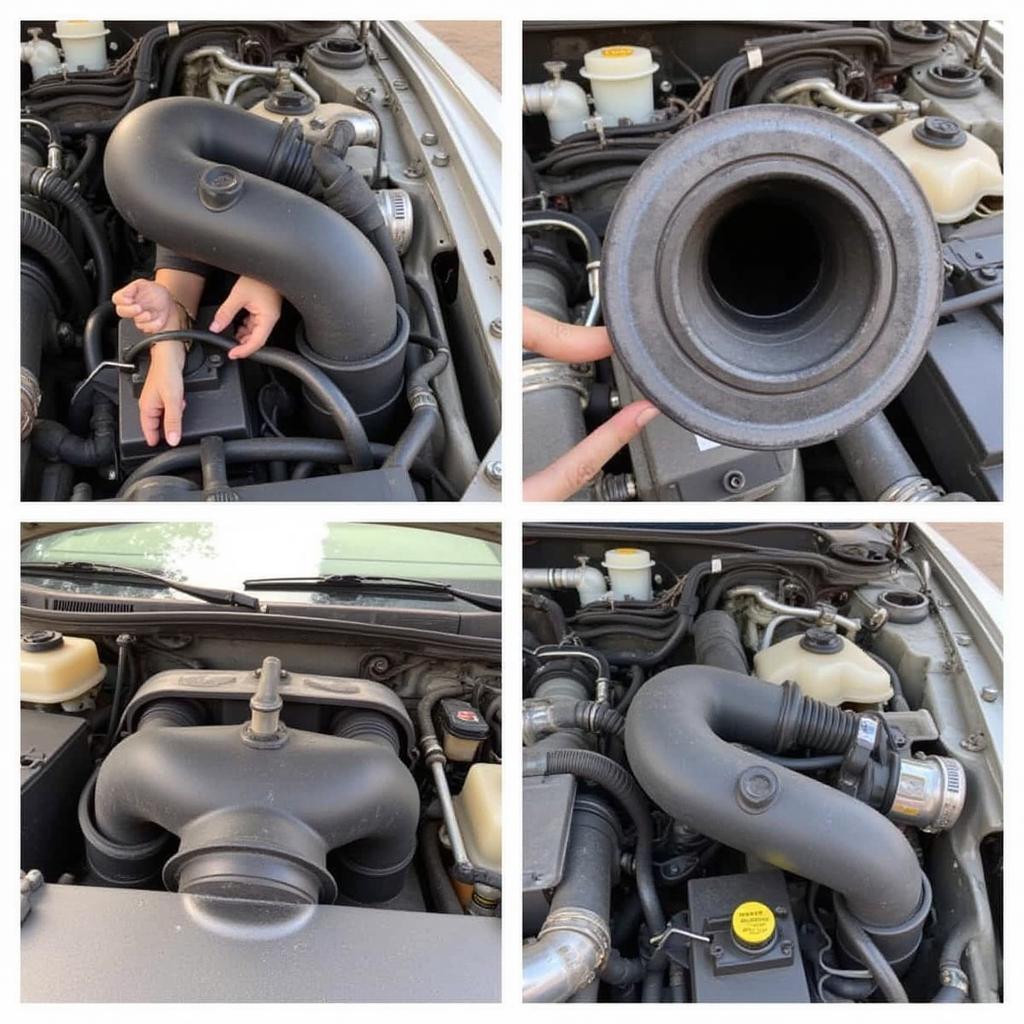The infamous 1999 Lincoln Town Car Intake Manifold Problems have plagued owners for years. This guide dives deep into the common issues, diagnostic procedures, and repair options, offering practical advice for owners, mechanics, and technicians alike.
Understanding the 1999 Lincoln Town Car Intake Manifold
The intake manifold plays a crucial role in your Town Car’s engine, distributing the air-fuel mixture to the cylinders. In the 1999 model, a plastic intake manifold was used, which, unfortunately, is prone to cracking and warping over time. This can lead to a range of performance issues, from coolant leaks to rough idling.
Common Symptoms of a Failing Intake Manifold
- Coolant leaks: One of the most common signs of a faulty intake manifold is a coolant leak. You might notice a low coolant level, a sweet smell, or even puddles of coolant under your car.
- Rough idling: A cracked or warped manifold can disrupt the air-fuel mixture, causing the engine to idle roughly or stall.
- Loss of power: A leaking manifold can affect engine performance, leading to a noticeable decrease in power and acceleration.
- Check engine light: The check engine light can illuminate for various reasons, including a faulty intake manifold. Have the codes read by a mechanic to confirm the diagnosis.
Diagnosing 1999 Lincoln Town Car Intake Manifold Problems
Proper diagnosis is key to addressing intake manifold issues effectively. Here’s how to pinpoint the problem:
- Visual inspection: Carefully examine the intake manifold for any visible cracks, warping, or signs of leakage.
- Pressure test: A pressure test can help identify leaks within the cooling system, including those originating from the intake manifold.
- Leak down test: This test can help detect leaks in the cylinders, which can sometimes be related to intake manifold issues.
- Diagnostic codes: Retrieve the diagnostic trouble codes (DTCs) using an OBD-II scanner. Certain codes can indicate a problem with the intake manifold or related components.
What to Look For During a Visual Inspection
Focus on the areas around the thermostat housing and the EGR passage, as these are common points of failure. Look for any signs of coolant residue or discoloration.
Repairing or Replacing the Intake Manifold
Once you’ve diagnosed the problem, you have two options: repair or replace the intake manifold.
- Repair: Minor cracks can sometimes be repaired using epoxy or sealant. However, this is often a temporary fix and a complete replacement is generally recommended.
- Replacement: Replacing the intake manifold is the most reliable solution. Consider upgrading to an aluminum aftermarket intake manifold, which is more durable and less prone to cracking.
Steps for Replacing the Intake Manifold
- Disconnect the battery: Always disconnect the negative battery cable before working on any electrical components.
- Drain the coolant: Drain the engine coolant into a clean container.
- Remove components: Remove any components obstructing access to the intake manifold, such as the air intake, fuel lines, and electrical connectors.
- Detach the intake manifold: Carefully detach the intake manifold from the engine block.
- Install the new manifold: Install the new intake manifold, using new gaskets and ensuring proper torque specifications.
- Reconnect components: Reconnect all removed components.
- Refill coolant: Refill the cooling system with the appropriate coolant.
- Test for leaks: After starting the engine, check for any leaks and ensure proper operation.
 Replacing the Intake Manifold on a 1999 Lincoln Town Car
Replacing the Intake Manifold on a 1999 Lincoln Town Car
Conclusion
1999 Lincoln Town Car intake manifold problems can be a headache, but with proper diagnosis and repair, you can get your car running smoothly again. Whether you choose to repair or replace the manifold, ensure you use quality parts and follow the correct procedures. Don’t hesitate to reach out to us at AutoTipPro for further assistance. Our number is +1 (641) 206-8880, and our office is located at 500 N St Mary’s St, San Antonio, TX 78205, United States.
FAQ
- What are the most common symptoms of a bad intake manifold on a 1999 Lincoln Town Car? Coolant leaks, rough idling, loss of power, and a check engine light are common indicators.
- Can I repair a cracked intake manifold? Minor cracks can sometimes be repaired, but replacement is generally recommended for a lasting solution.
- What is the best replacement intake manifold for a 1999 Lincoln Town Car? Aluminum aftermarket manifolds are a popular upgrade due to their durability.
- How much does it cost to replace an intake manifold on a 1999 Lincoln Town Car? The cost varies depending on labor rates and the type of manifold used.
- How long does it take to replace an intake manifold? The replacement process typically takes several hours.
- Can a bad intake manifold cause overheating? Yes, a coolant leak from a faulty intake manifold can lead to overheating.
- What other problems can a bad intake manifold cause? It can lead to poor fuel economy, engine misfires, and even engine damage in severe cases.




Leave a Reply